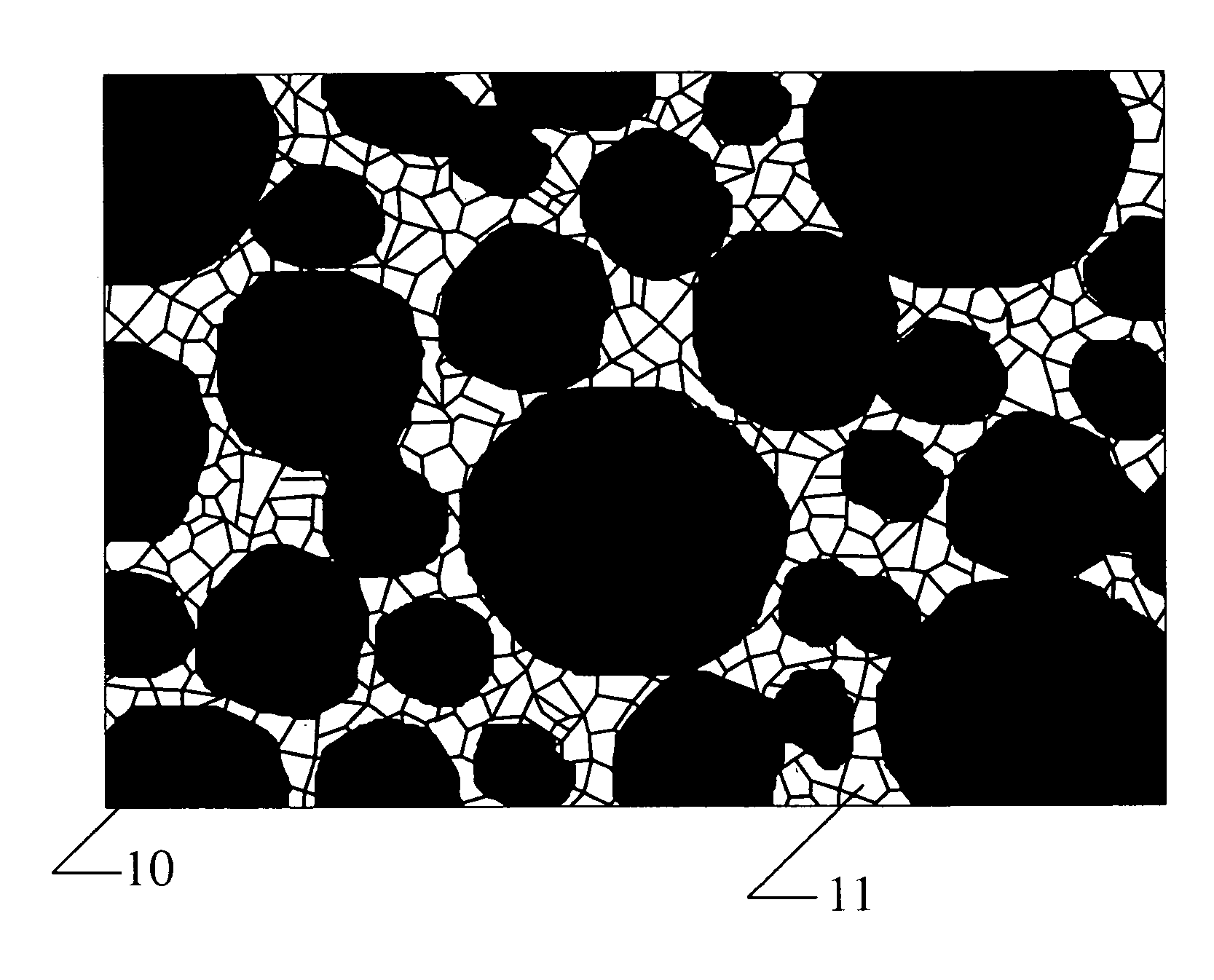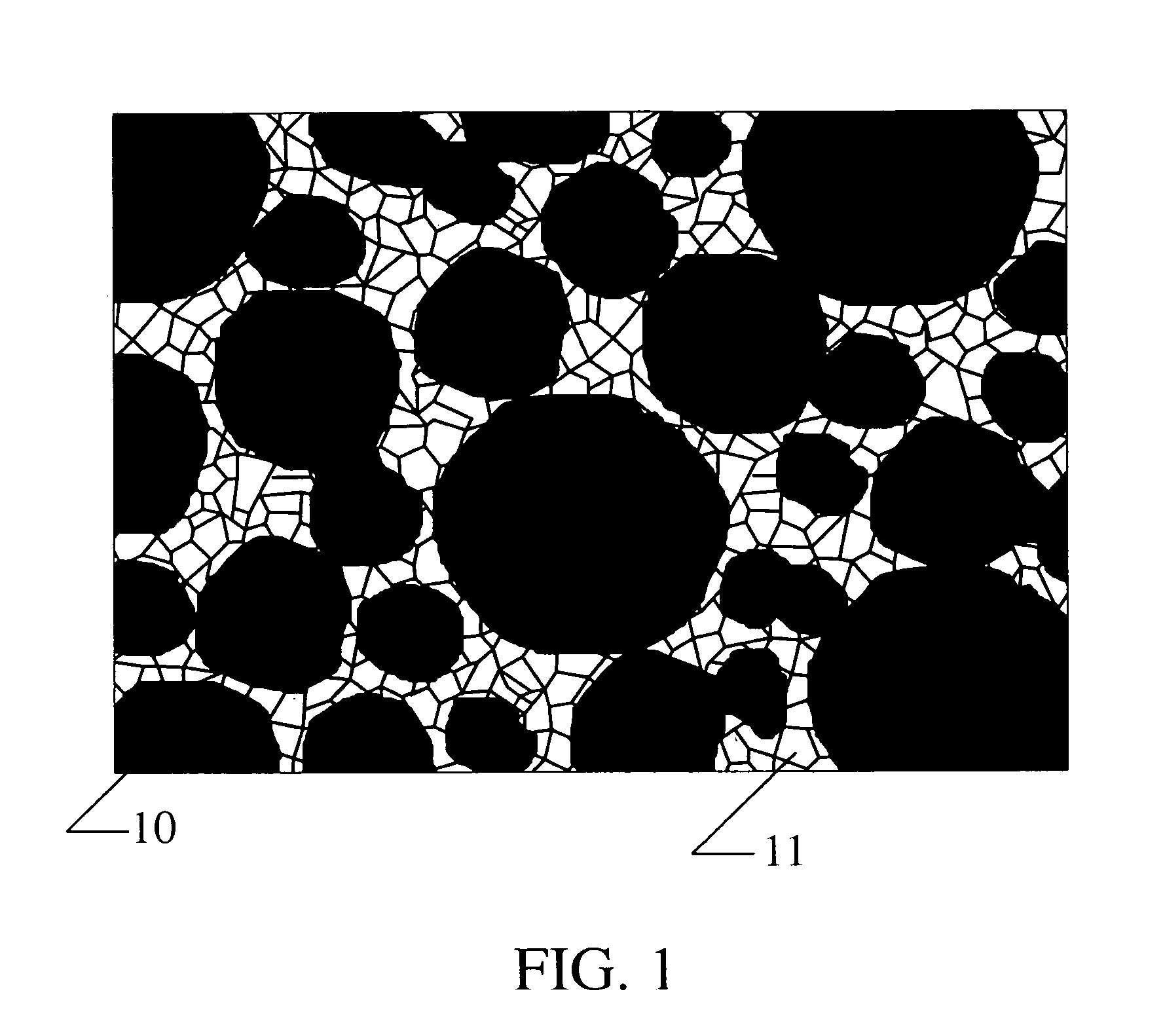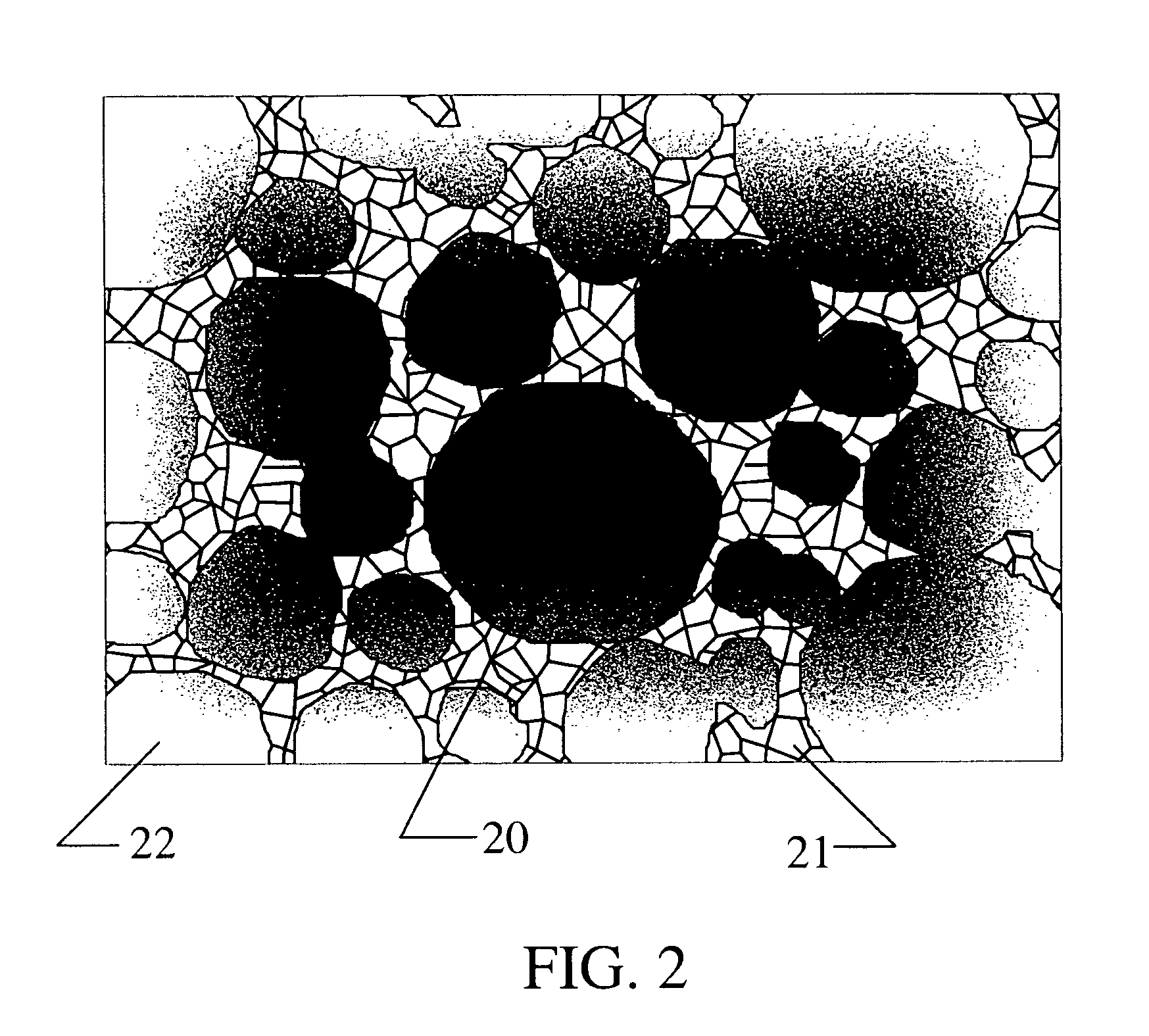Porous metal articles having a predetermined pore character
a technology of porous metal and pore character, which is applied in the direction of filtration separation, prosthesis, separation process, etc., can solve the problems of reducing process robustness, limiting processing capabilities to articles with smaller cross-sections, and metal matrix materials easily becoming contaminated by vaporizing materials
- Summary
- Abstract
- Description
- Claims
- Application Information
AI Technical Summary
Benefits of technology
Problems solved by technology
Method used
Image
Examples
Embodiment Construction
[0022]The present invention relates to porous metal articles having porosity characteristics that are determined by an extractable material which is removed prior to sintering and methods to manufacture such porous metal articles.
[0023]Powder metallurgy processes are used to form metal articles wherein a portion of the powder being processed is replaced with a pore forming material which is removed prior to sintering to form the desired porosity. The metal articles include articles that are elemental metal, metal alloys, and metal composites. The pore forming material is referred to as an extractable particulate or pore-former.
[0024]The metal powder and pore-former are mixed, the article is formed, and the pore-former is extracted. The powder remains to form the metal matrix of material around the pores formed by the extractable particulate. The matrix can then be further shaped and sintered to give the article greater strength.
[0025]The use of an extractable particulate to form por...
PUM
| Property | Measurement | Unit |
|---|---|---|
| diameter | aaaaa | aaaaa |
| diameter | aaaaa | aaaaa |
| porosity | aaaaa | aaaaa |
Abstract
Description
Claims
Application Information
 Login to View More
Login to View More - R&D
- Intellectual Property
- Life Sciences
- Materials
- Tech Scout
- Unparalleled Data Quality
- Higher Quality Content
- 60% Fewer Hallucinations
Browse by: Latest US Patents, China's latest patents, Technical Efficacy Thesaurus, Application Domain, Technology Topic, Popular Technical Reports.
© 2025 PatSnap. All rights reserved.Legal|Privacy policy|Modern Slavery Act Transparency Statement|Sitemap|About US| Contact US: help@patsnap.com



